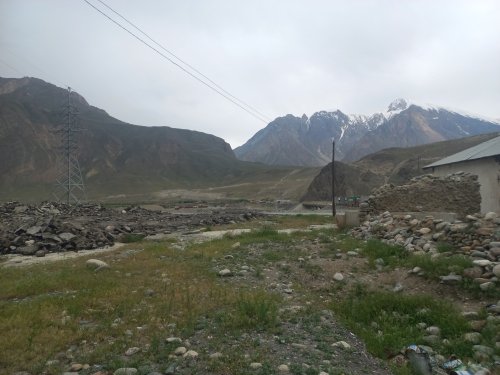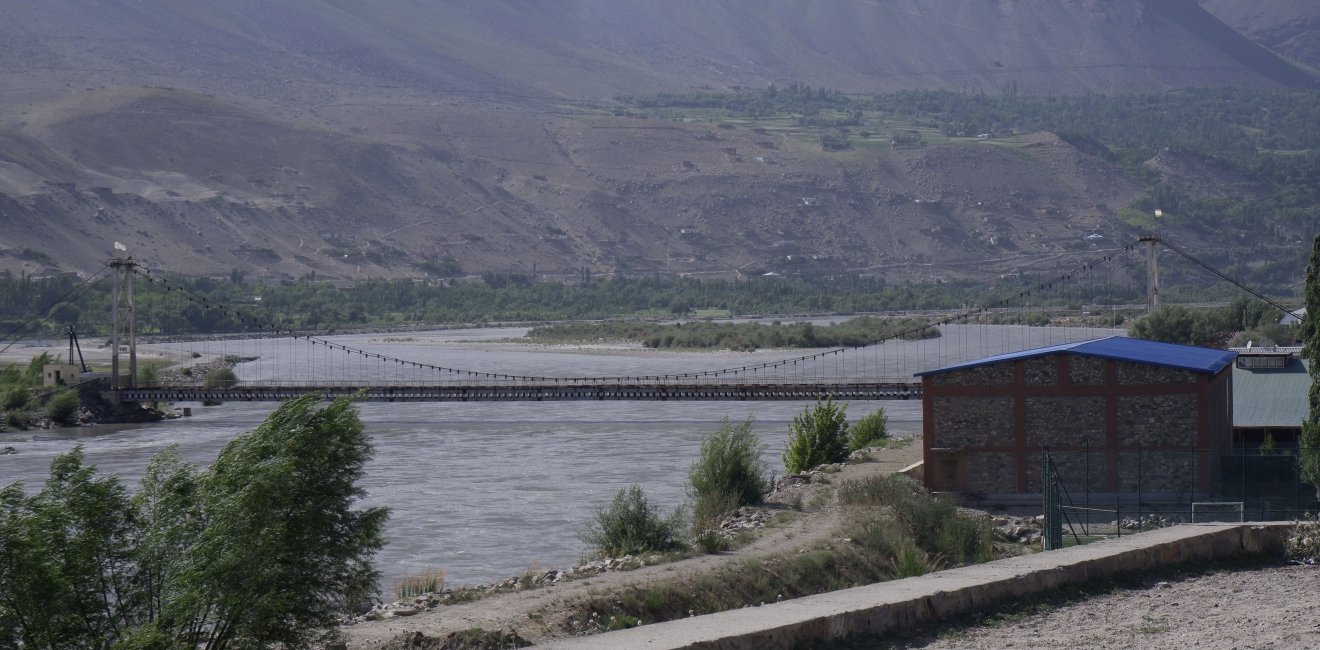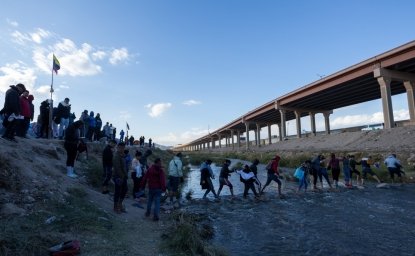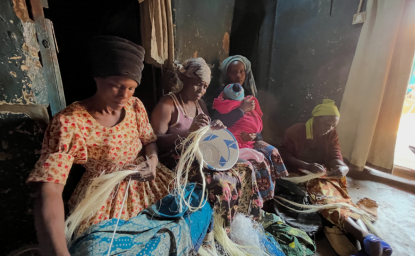Q: Describe your background and what brought you to the Wilson Center.
I received my PhD in International Relations at the National Institute for Oriental Languages and Civilizations in Paris in October 2022. My PhD research was on the cross-border activities between Tajikistan and Afghanistan in the remote areas of the Pamir Mountains, drawing on ethnographic fieldwork conducted there between 2018 and 2022. Since finishing my PhD, I have been a post-doctoral fellow at the Institute for European, Russian and Eurasian Studies at the George Washington University (GWU) as part of the Central Asia Program. I had heard of the Kennan Fellowship the first time I came to GWU in 2020 as a visiting scholar through a friend of mine, Emmanuel Dreyfus, who had received a three-month fellowship the year before. He had told me about his incredible experience there. He suggested that I apply to the Kennan Institute fellowship to benefit from the center’s resources and network and to share my research findings with a larger audience outside of academia.

Q: What project are you working on at the Center?
The recent developments in Afghanistan have influenced the way in which borders are negotiated in the region. Based on fieldwork conducted after I submitted my PhD, I am assessing how the Taliban's rise to power has changed the cross-border dynamics between Central Asia and Afghanistan. In the summer of 2022 and most recently in April and May 2023, I visited the Tajikistan-Afghanistan border and the Uzbekistan-Afghanistan border and noticed many important changes I would like to explore. The borderlands I have been studying in the Badakhshan region are now facing a closed border regime which is impacting daily life at the border as well as international contact. At the same time, traffic continues at another border crossing point between the two countries on the Western part of the border, just like at the border between Uzbekistan and Afghanistan. In addition, the presence of terror groups affiliated with the Taliban and based in Northern Afghanistan are creating security concerns for regional actors like China and Russia. Drawing on these observations and interviews with individuals involved in cross-border interactions, I would like to show how local dynamics have a greater resonance on the macro phenomena of connectivity, relations between Central Asian states and the Taliban, and how we can better assess security implications. The broader picture also reveals that with the Taliban now in power, China, a major actor in Tajikistan, is getting more influence and that its presence is increasingly visible along the border with Afghanistan.
Q: How did you become interested in your current research topic?
My interest for the region stems from my Afghan origins. My father was born and raised in Afghanistan and had to leave the country because of the war. In 2014, when I first traveled to Tajikistan and to the border with Afghanistan in Badakhshan and the Pamirs, I was amazed by the very unique environment. I always wondered how the Pyanj river became an official line of demarcation, why it was the separation between peace and war, and ultimately why my father had to escape. This spurred my interest in the history of cross-border interactions but also in how they have developed since the independence of Tajikistan. I was amazed by the way people talked about the other side, by their interest in crossing and meeting their neighbors across the river. I discovered many cross-border programs intended to enhance cooperation, while also seeing border guards patrolling and hearing official narratives about the lack of security along this border. I've always wondered how such paradoxical phenomena could take place there and why I, as a foreign woman of Afghan origins, could travel and live along this border without fearing for my own security. I took advantage of my command of Dari and Tajik which is spoken on both sides of the border, and my knowledge of Russian, which naturally led me to explore the topic further during my PhD program in International Relations. I am very grateful to have been able to conduct fieldwork every year since 2018, for all those who have supported me in academia, and those who have helped me in the field.
Q: Why do you believe that your research matters to a wider audience?

I believe that when it comes to border issues, looking at the local dynamics is necessary to understand the broader macro picture. The northern borders of Afghanistan are often described as dangerous for the wider Central Asia region, but these assumptions are based solely on stereotypes conveyed in official discourses. When spending time along the borders between Tajikistan and Afghanistan, and Uzbekistan and Afghanistan, I realized there was much more to share, and it was necessary to elevate the voices of those who live along the border and experience it on a daily basis. At the same time, it is possible to show what security really is along these borders, who is managing it, and how security interests meet connectivity goals. By showing that trucks and people can cross into Afghanistan to a certain extent, we can show that regional connectivity is slowly kicking off, and why it remains crucial to study Central Asia from a bottom-up perspective.
Q: What is the most challenging aspect of your research?
When I describe my research and fieldwork, people often think that the most challenging part is spending time along the northern border of Afghanistan. However, I would say that the hardest part for me is to change people's minds about the reality of everyday life there. Unfortunately, there is a widespread negative perception of this region. Convincing academics or even decision makers that open borders are key to stabilizing and developing the region is a challenge, but I hope it gives a purpose to my research.
Q: What do you hope the impact of your research will be?
I hope I can convey a better understanding of what is going on in the borderlands between Central Asia and Afghanistan even if I always question my own understanding and interpretation. However, if I can bring back a more nuanced pictures of the cross-border contact taking place there and share how people who live along those borders talk about them, about China, about the Taliban, and how they perceive security or insecurity, I hope to change the way we perceive this region, which is the first to step in shaping relevant policies towards it.
The opinions expressed in this article are those solely of the author and do not reflect the views of the Kennan Institute.
Author

Post-Doctoral Fellow, Institute for European, Russian, and Eurasian Studies (IERES), George Washington University

Kennan Institute
After more than 50 years as a vital part of the Wilson Center legacy, the Kennan Institute has become an independent think tank. You can find the current website for the Kennan Institute at kennaninstitute.org. Please look for future announcements about partnership activities between the Wilson Center and the Kennan Institute at Wilson Center Press Room. The Kennan Institute is the premier US center for advanced research on Eurasia and the oldest and largest regional program at the Woodrow Wilson International Center for Scholars. The Kennan Institute is committed to improving American understanding of Russia, Ukraine, Central Asia, the South Caucasus, and the surrounding region through research and exchange. Read more





